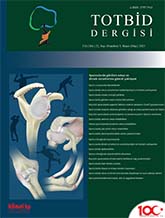
Superior labrum anterior to posterior (SLAP) injuries were first described by Andrews in 1985. The kinematics of overhead throwing is quite complex due to the enormous forces acting on the shoulder. Superior labrum anterior to posterior injuries are common in athletes and are the result of trauma from compression, traction or repetitive overhead activities performed by athletes. However, there is no consensus on different aspects such as pathophysiology and treatment options. Initial treatment is based on rehabilitation with stretching, anti-inflammatory drugs, and activity modifications. If these failed, arthroscopic surgery is necessary. The main debate in the surgical treatment of SLAP injuries is repair or tenodesis. Actions to be taken according to the type of injury and additional injuries related to that are considered. When the tenodesis or repair will be indicated, the limit of conservative treatment, whether there is a difference between surgical techniques in functional results, and the rates of return to sports or reoperation are the basic questions for the surgeon. Currently, clinical outcomes have varied according to patients` age, sports and expectations. This review aims to present evidence regarding the pathophysiology, treatment options, outcomes, return to activities, and complications of SLAP injury.